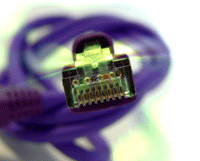Vampire Bats - A Stroke of Genius?

Out Of
The Shadows.
A spokesperson for Bela Lugosi confirms the late actor has indeed rolled over in his grave. The iconic portrayer of Dracula is said to have been both shocked and delighted at the news that Vampire Bats were contributing to advances in the treatment of stroke victims. Interviewed at his private mausoleum, Lugosi said, "This news makes me very thirst, I mean, very happy. Would you like to join me for a nightcap?"
Vampire Bats, while not fully stepping into the sunshine, are certainly finding their way out of the shadows thanks to modern medicine. Researchers worldwide are studying the effect of the bat's saliva on stroke victims. Initial results are impressive and the scientists believe the natural anti-clotting properties of the saliva holds great promise for early use with stroke victims.
The current standard for early intervention, tissue plasminogen activator (TPA), has limitations that scientists hope to address with the bat saliva derivative. TPA must be administered within three hours of a stroke and takes up to an hour to administer when given intravenously. The bat saliva derivative is administered by injection in just a minute or two and, most significantly, can be administered up to nine hours post-stroke. The additional time available for intervention is crucial, as only about three percent of stroke victims receive hospital treatment within the first three hours.
Will Vampire Bats recover from the centuries of disdain and scorn? Doubtful. But, neurology residents are anxiously awaiting the new drug's approval. They are, of course, hoping to be the first to use the new drug to treat a stroke victim. It's unclear, however, if their enthusiasm stems from the drugs efficacy, or the potential of being the first to shout, "Get the bat - stat!"
For more on the new drug, see this news item from Ohio State University Medical Center.










